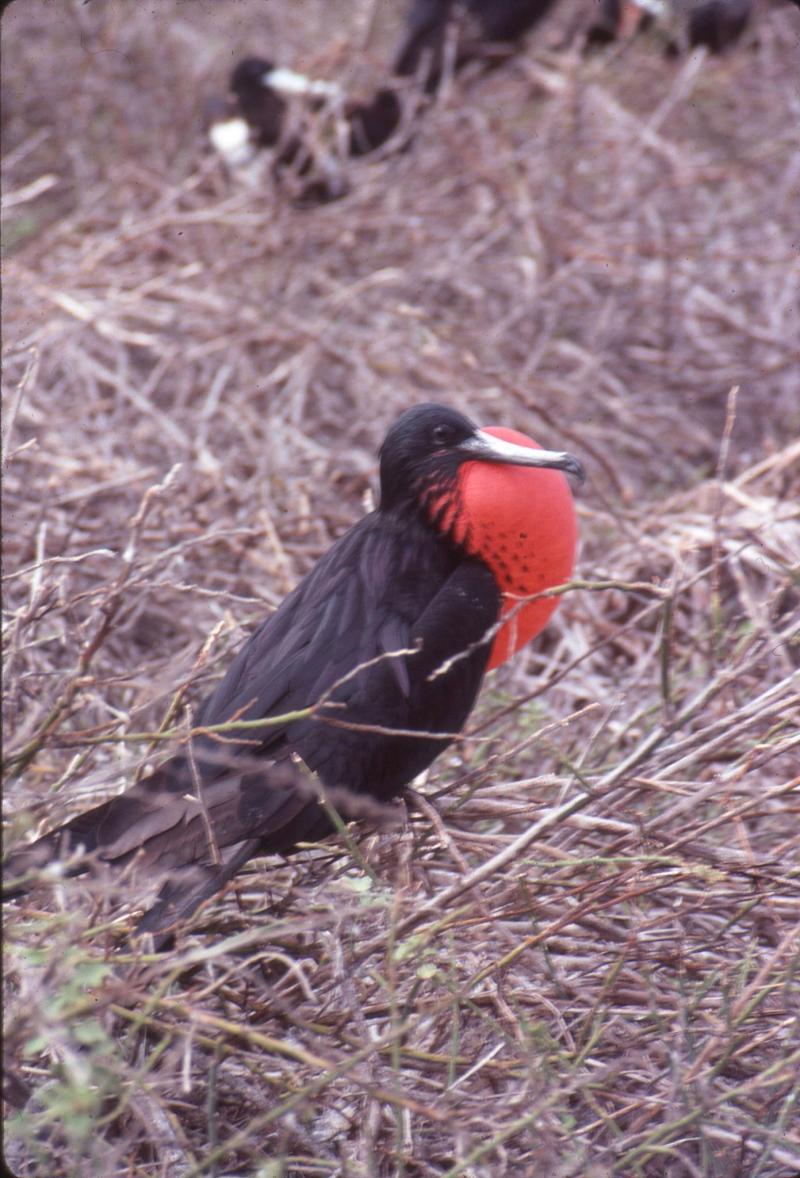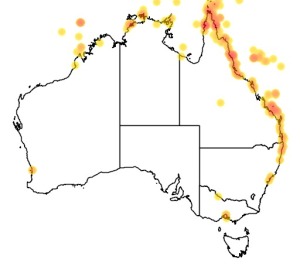Colours
Distinguishing features
It is a large seabird and, despite its name, it is the second largest frigatebird, after the Magnificent Frigatebird.
Males are smaller than females, but the extent of the variation varies geographically. The plumage of males is black with scapular feathers that have a green iridescence when they refract sunlight. Females are black with a white throat and breast and have a red eye ring. Juveniles are black with a rust-tinged white face, head, and throat. (Wikipedia)
Size
- From 85 cm to 105 cm (Length of specimen)
Weight
- From 0.64 kg to 1.55 kg
Wingspan
- From 205 cm to 230 cm
Synonyms
Distribution
Distribution and habitat preferences
It has a wide distribution throughout the world’s tropical seas. Hawaii is the northernmost extent of their range in the Pacific Ocean. In the Central and South Pacific, colonies are found on most islands Groups from Wake Island to the Galapagos Islands to New Caledonia with a few pairs nesting on Australian possessions in the Coral Sea.
Colonies are also found on numerous Indian Ocean islands including Aldabra, Christmas Island, Maldives and Mauritius.
The small populations in the Western Atlantic Ocean may still persist but are very small if they do. (Wikipedia)
Audio recordings
Territorial whinnying from several individuals on nests in colony at very close range. Gular air sac was fully inflated.
© Eric DeFonso
(source)
Diet
It forages in pelagic waters within 80 km of the breeding colony or roosting areas. Flyingfish from the family Exocoetidae are the most common item in the diet though other fish species and squid may be eaten as well.
Prey is snatched while in flight, either from just below the surface or from the air in the case of flyingfish flushed from the water.
They make use of schools of predatory tuna or pods of dolphins that push schooling fish to the surface.
Like all frigatebirds they will not alight on the water surface and are usually incapable of taking off should accidentally do so.
A small number of females also hunt seabird chicks at their breeding colonies, taking mostly the chicks of Sooty Terns, Spectacled Terns, Brown Noddies and Black Noddies.
They will attempt kleptoparasitism, chasing other nesting seabirds (boobies and tropicbirds in particular) in order to make them regurgitate their food. This behaviour is not thought to play a significant part of the diet of the species, and is instead a supplement to food obtained by hunting. (Wikipedia)






